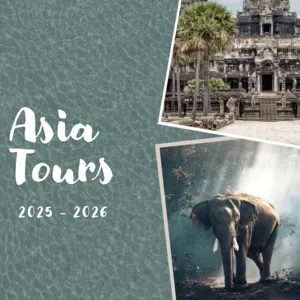Festivals & Events Bangladesh
Experience the Vibrant Festivals & Events of Bangladesh
Bangladesh, a land of vibrant culture and rich heritage, comes alive throughout the year with a dazzling array of festivals and events. From colorful religious celebrations to lively cultural showcases, there’s always something exciting happening in this South Asian nation. Whether you’re a seasoned traveler or a first-time visitor, immersing yourself in Bangladesh’s festivals is an unforgettable experience. Importantly, this guide will provide all the necessary information.
Book Your Festivals & Events in Bangladesh Now
What are the Major Festivals in Bangladesh?
Bangladesh boasts a diverse range of festivals, reflecting its multicultural population. Consequently, some of the most prominent include:
Pohela Boishakh (Bengali New Year)
Pohela Boishakh, celebrated on April 14th, marks the beginning of the Bengali New Year. It’s the most colorful and widely celebrated festival in Bangladesh, uniting people of all religions and backgrounds. For example, cities and villages erupt in a riot of color, with vibrant processions (Mangal Shobhajatra), traditional music, dance performances, and fairs (Boishakhi Mela) offering delicious food and handicrafts. People wear new clothes, traditionally red and white, and exchange greetings of “Shubho Noboborsho!” (Happy New Year!). Ultimately, the celebrations are a deep dive into Bengali traditions.
Address: Celebrated nationwide, with major events in Dhaka (Ramna Park, Dhaka University) and other major cities.
Opening Hours: Festivities typically begin early in the morning and continue throughout the day.
Availability: Open to all; no tickets required for public events.
Prices: Free access to most events; food and crafts at fairs are priced individually.
Eid al-Fitr and Eid al-Adha (Muslim Festivals)
Eid al-Fitr and Eid al-Adha are the two most important religious festivals for Muslims in Bangladesh. Specifically, Eid al-Fitr marks the end of Ramadan, the holy month of fasting, and is celebrated with prayers, feasts, and the giving of charity (Zakat). Meanwhile, Eid al-Adha, the Festival of Sacrifice, commemorates the willingness of Ibrahim (Abraham) to sacrifice his son. This festival involves the sacrifice of an animal (usually a goat, sheep, cow, or camel) and the distribution of meat to family, friends, and the needy. Furthermore, both festivals are characterized by family gatherings, special prayers at mosques, and festive meals.
Address: Celebrated nationwide in homes and mosques.
Opening Hours: Prayers typically in the morning; festivities continue throughout the day.
Availability: Religious observances primarily for Muslims; non-Muslims may be invited to participate in feasts.
Prices: Varies depending on personal spending on food, gifts, and charity.
Durga Puja (Hindu Festival)
Durga Puja is the biggest festival for the Hindu community in Bangladesh. This is a ten-day celebration honoring the goddess Durga and her victory over evil. During this time, elaborately decorated pandals (temporary structures) are erected across the country, housing beautiful idols of Durga. The festival features vibrant processions, music, dance, cultural performances, and the immersion of the idols in rivers on the final day ( বিজয়া দশমী – Bijoya Dashomi). In short, the energy and artistic displays are truly captivating.
Address: Celebrated nationwide, particularly in Dhaka (Dhakeshwari Temple) and other areas with significant Hindu populations.
Opening Hours: Festivities continue day and night for several days.
Availability: Open to all; visitors are welcome to visit pandals and witness the celebrations.
Prices: Free access to most events; donations to pandals are customary.
Other Notable Festivals & Events
Besides these major festivals, Bangladesh hosts numerous other events, including:
- International Mother Language Day (February 21st): Commemorates the language movement of 1952.
- Independence Day (March 26th): Celebrates Bangladesh’s independence.
- Victory Day (December 16th): Marks the victory in the Liberation War.
- Dhaka Lit Fest: An international literary festival.
- Bishwa Ijtema:One of the largest annual Islamic gatherings in the world, held in Tongi.
- Chobi Mela: International photography festival.
Planning Your Trip Around Festivals & Events
Attending a festival or event in Bangladesh offers a unique opportunity to experience the local culture firsthand. Therefore, here’s how to plan your trip:
Choosing the Right Time to Visit
Consider which festivals align with your interests and travel dates. While Pohela Boishakh (April) offers a broad cultural experience, Eid and Durga Puja provide insights into specific religious traditions. However, check the specific dates for the lunar-based Islamic festivals, as they vary each year.
Booking Accommodations and Transportation
It’s crucial to book accommodations and transportation well in advance, especially if traveling during major festivals, as hotels and transport options fill up quickly. Consider various accommodation options, from hotels to guest houses, depending on your budget and preferences. Moreover, for transportation, explore flights, trains, and buses.
Understanding Local Customs and Etiquette
It is important to respect local customs and traditions. For instance, dress modestly when visiting religious sites. Also, ask for permission before taking photographs of people. In addition, be prepared for large crowds and be mindful of your belongings.
Nearby Attractions
While attending festivals, take the opportunity to explore nearby attractions:
1. Most Interesting: Ahsan Manzil (Pink Palace), Dhaka
Ahsan Manzil is a stunning historical palace on the banks of the Buriganga River. It showcases Mughal architecture and offers a glimpse into Dhaka’s past, with a captivating museum inside. As a result, it will take you into the past.
Address: 06, Islampur Rd, Dhaka 1100, Bangladesh
Opening Hours: 10:30 AM – 5:30 PM (Closed on Thursdays)
Availability: Open to the public.
Prices: Entry fee for locals and foreigners.
2. Most Piquant: Panam Nagar (Panam City)
Panam Nagar is an abandoned city near Sonargaon, with crumbling mansions showcasing unique architectural styles. Consequently, it offers an eerie yet fascinating glimpse into a bygone era, sparking curiosity about its history and sudden desertion.
Address: Sonargaon, Narayanganj District, Bangladesh
Opening Hours: Generally accessible during daylight hours.
Availability: Open to the public; may require a local guide.
Prices: Small entry fee may apply.
3. Most Spectacular: Lalbagh Fort, Dhaka
Lalbagh Fort is an incomplete 17th-century Mughal fort complex with impressive structures, including a mosque, a tomb, and a diwan-i-aam (hall of public audience). Therefore, the fort’s grandeur and historical significance are visually stunning.
Address: Lalbagh Rd, Dhaka 1211, Bangladesh
Opening Hours: 10:00 AM – 6:00 PM (Closed on Sundays)
Availability: Open to the public.
Prices: Entry fee for locals and foreigners.
4. Funniest: Rickshaw Art Exploration
While not a specific location, exploring Dhaka’s streets and observing the vibrant and often humorous rickshaw art is a uniquely entertaining experience. For example, the paintings often depict scenes from movies, folklore, or everyday life, with a touch of humor.
Address: Streets of Dhaka, particularly Old Dhaka.
Opening Hours: Visible throughout the day.
Availability: Publicly visible; rickshaw rides are readily available.
Prices: Rickshaw fares vary.
5. Most Mysterious: The Star Mosque (Tara Masjid), Dhaka
Known for its intricate mosaic decorations made of broken china, the Star Mosque has a unique and somewhat mysterious charm. Furthermore, the origins of the design and the specific stories behind the mosaic patterns are subjects of local lore.
Address: Abul Khairat Rd, Dhaka 1100, Bangladesh
Opening Hours: Accessible during prayer times; visitors should be respectful.
Availability: Open to the public; modest dress required.
Prices: Free; donations welcome.
6. Most Extreme: Trekking in the Chittagong Hill Tracts
For the adventurous, trekking in the Chittagong Hill Tracts offers challenging terrain, stunning landscapes, and encounters with diverse indigenous communities. However, this requires physical fitness and prior planning.
Address: Chittagong Hill Tracts, Southeastern Bangladesh
Opening Hours: Dependent on trekking permits and guides.
Availability: Requires permits and often a local guide; not recommended for inexperienced trekkers.
Prices: Varies depending on trekking duration and services.
7. Most Inspiring: National Martyrs’ Memorial, Savar
The National Martyrs’ Memorial is a striking monument commemorating those who died in the Bangladesh Liberation War. Thus, its design and the stories of sacrifice it represents evoke a sense of national pride and inspire reflection on history and freedom.
Address: Savar, Dhaka District, Bangladesh
Opening Hours: Generally accessible during daylight hours.
Availability: Open to the public.
Prices: Free.
8. The Most Amazing: Sundarbans Mangrove Forest
The Sundarbans is the largest mangrove forest in the world, a UNESCO World Heritage Site, and home to the Royal Bengal Tiger. As a result, the sheer scale and biodiversity of the Sundarbans are awe-inspiring and beyond the ordinary.
Address: Khulna Division, Southwestern Bangladesh
Opening Hours: Tours typically run during daylight hours.
Availability: Accessible only by organized tours; permits required.
Prices: Varies depending on tour operator and duration.
9. The Most Atmospheric: Sixty Dome Mosque, Bagerhat
A UNESCO World Heritage Site, this 15th-century mosque (which actually has more than 60 domes) has a unique and serene atmosphere. Moreover, its ancient brick architecture and the surrounding tranquil landscape create a sense of timelessness.
Address: Bagerhat, Khulna Division, Bangladesh
Opening Hours: Generally accessible during daylight hours.
Availability: Open to the public; modest dress recommended.
Prices: Small entry fee may apply.
10. The Most Unusual: Ship Breaking Yards, Chittagong
While controversial, the ship breaking yards of Chittagong offer a unique and somewhat surreal sight. Here, massive ships are dismantled on the beaches, providing a glimpse into a rarely-seen industry. *Note: Access may be restricted, and safety precautions are crucial.*
Address: Sitakunda Upazila, Chittagong, Bangladesh
Opening Hours: Varies; access is often restricted.
Availability: Viewing is typically from a distance; unauthorized entry is prohibited.
Prices: N/A (access is generally not permitted).
Enhance Your Festival Experience
To add a touch of ease to your trip, consider these additional services:
- Audio Guide: Thus, enhance your sightseeing with informative audio guides.
- Luggage Storage: Therefore, explore freely without your bags.
- Insurance: Consequently, protect your travels with comprehensive insurance.
- eSIM: Finally, stay connected with convenient eSIM solutions.
Frequently Asked Questions (FAQs) about Festivals & Events in Bangladesh
What is the best time to visit Bangladesh for festivals?
April (Pohela Boishakh) and the periods around Eid and Durga Puja (dates vary) are ideal for experiencing major festivals. Nevertheless, there are events throughout the year.
Are there any festivals specific to certain regions of Bangladesh?
Yes, some festivals are more prominent in specific regions. For instance, Durga Puja is particularly grand in Dhaka and areas with large Hindu communities. Furthermore, local festivals and events are also common in rural areas.
How can I stay updated on festival dates and schedules?
Check online resources, including tourism websites and local event calendars. However, the dates of Islamic festivals are determined by the lunar calendar and may vary each year.
In conclusion, attending a festival in Bangladesh provides a vibrant and immersive cultural experience, offering a glimpse into the heart and soul of this captivating country.


